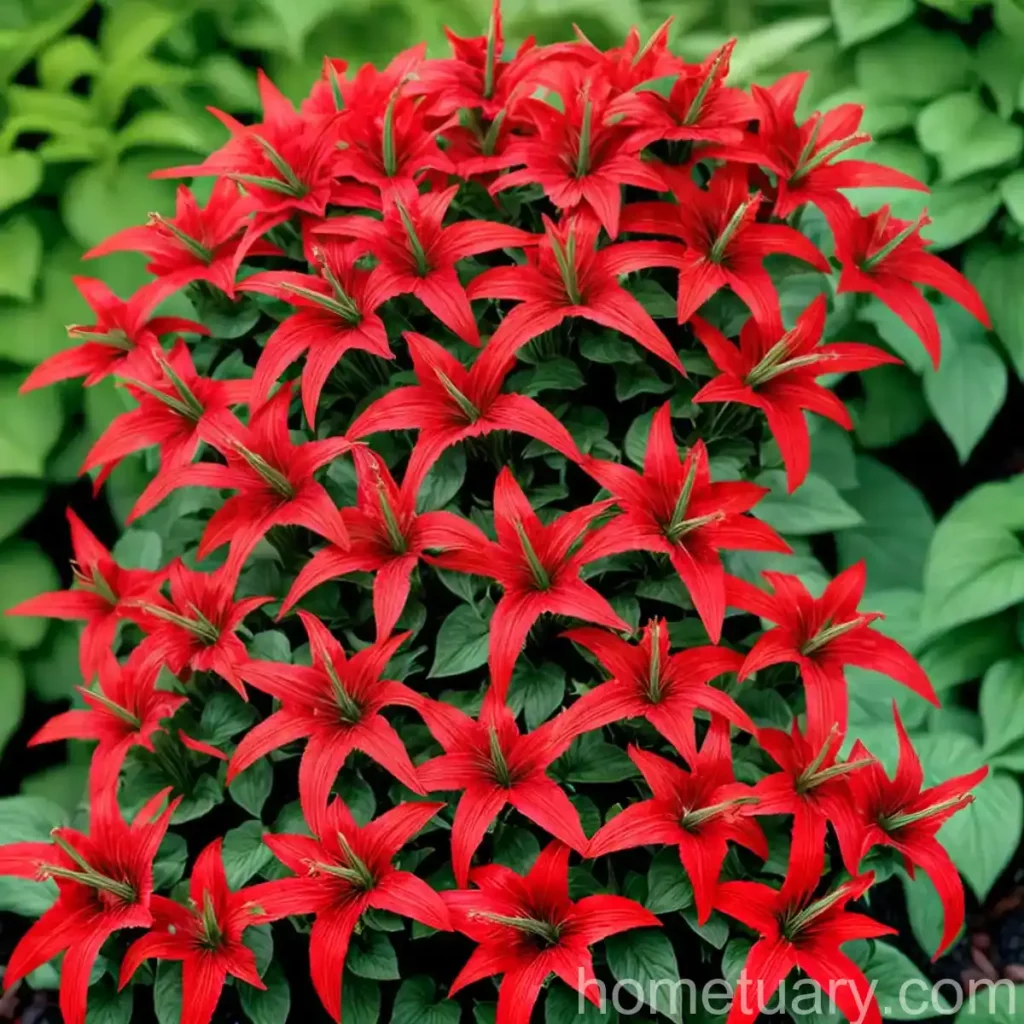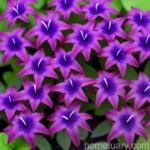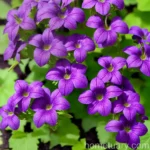Plant Profile: Cardinal Flower (Lobelia cardinalis ‘Queen Victoria’)
Cardinal Flower, scientifically known as Lobelia cardinalis ‘Queen Victoria’, is a stunning perennial plant that is a native to the Americas. In this blog post, we’re going to explore everything you need to know about this gorgeous plant, from its cultural requirements to its uses, diseases, and more. Let’s dive in!
What is Cardinal Flower?
Cardinal Flower, Lobelia cardinalis ‘Queen Victoria’ is a member of the Campanulaceae family and is native to North and Central America. This perennial plant is known for its vibrant red blooms and its ability to attract pollinators such as butterflies and hummingbirds. Its striking appearance and ecological importance have made it a popular choice for gardeners and landscapers.
Key Takeaways
Cardinal Flower (Lobelia cardinalis ‘Queen Victoria’)
- Plant Care
- Requirements: Water, sunlight, soil, fertilizer, pruning, propagation
- Cultural Uses
- Popular in native gardens, borders, water features
- Common Diseases
- Root rot, powdery mildew
- Common Pests
- Aphids, slugs
Now, let’s delve into the specific details about the culture, uses, and care requirements for Lobelia cardinalis ‘Queen Victoria’.
Culture
Water
Cardinal flowers thrive in consistently moist soil. It is essential to ensure that the soil never dries out completely. This can be achieved through regular watering, especially during dry periods. However, it’s important to avoid waterlogged conditions, as excessive moisture can lead to root rot.
Sunlight
These plants prefer partial shade to full sun. It is important to provide them with enough sunlight to promote optimal flowering while protecting them from scorching heat, especially during the hottest part of the day.
Fertilizer
Cardinal flowers benefit from a balanced, slow-release fertilizer applied in spring. This will provide the necessary nutrients for healthy growth and prolific flowering throughout the growing season.
Soil
They thrive in rich, consistently moist, well-draining soil with a slightly acidic to neutral pH. Incorporating organic matter such as compost into the soil can improve its structure and fertility, creating an ideal environment for the plant to flourish.
Pruning
Deadheading spent flowers can encourage the plant to produce more blooms. Additionally, cutting back the stems after the flowering period can promote a bushier and more compact growth habit.
Propagation
Propagation of Lobelia cardinalis ‘Queen Victoria’ can be achieved through division or stem cuttings. Both methods can be successful, and they allow for the expansion of your plant collection or the sharing of this beautiful species with fellow gardening enthusiasts.
Uses
Popularity
With its striking appearance and wildlife-friendly qualities, Lobelia cardinalis ‘Queen Victoria’ is a popular choice for various landscape and garden designs. It is often used in native plant gardens, woodland borders, and along the edges of ponds or water features.
Container
Due to its upright growth habit and striking blooms, Cardinal Flower can be an excellent choice for container gardening. Placing it in a large container with well-draining soil can create a stunning focal point on a patio or outdoor space.
Common Diseases
Disease Diagnosis
Cardinal flowers can be susceptible to certain diseases, including root rot and powdery mildew. Monitoring the plant for signs of wilting, yellowing foliage, or powdery white patches can help in early disease detection, allowing for prompt intervention.
Common Pests
Pest Control
Aphids and slugs are among the common pests that can affect Lobelia cardinalis ‘Queen Victoria’. Regular inspections and the use of environmentally friendly pest control methods can help in keeping infestations under control without harming the beneficial insects that visit the plant.
Botanist’s Tips
- Ensure that the soil remains consistently moist, especially during the plant’s active growth periods.
- Avoid wetting the foliage when watering, as this can contribute to the development of fungal diseases.
- Mulching around the base of the plant can help in retaining soil moisture and suppressing weeds.
- Consider companion planting with species that attract beneficial insects to create a more balanced and resilient garden ecosystem.
Fun Facts
- Cardinal flowers are named after the vivid red robes worn by Roman Catholic cardinals, a testament to the striking color of their blooms.
- Indigenous peoples of North America historically used cardinal flowers for various medicinal and ceremonial purposes, recognizing their potential beyond their ornamental value.
Now that we’ve explored the cultural requirements and uses of Lobelia cardinalis ‘Queen Victoria’, let’s move on to some practical tips for caring for this stunning perennial.
Links to External Resources
For additional information on cardinal flowers, here are some recommended resources:
In conclusion, Lobelia cardinalis ‘Queen Victoria’ is a captivating and ecologically significant plant that can enrich any garden or landscape setting. By understanding its cultural requirements and implementing appropriate care practices, gardeners can enjoy its vibrant blooms while contributing to the conservation of native flora and fauna.
Keywords: Lobelia cardinalis Queen Victoria, Lobelia cardinalis Queen Victoria plant care, Cardinal flower Queen Victoria, Lobelia cardinalis Queen Victoria characteristics, Queen Victoria cardinal flower varieties, Lobelia cardinalis Queen Victoria growth requirements, Queen Victoria cardinal flower planting tips, Lobelia cardinalis Queen Victoria watering needs, Queen Victoria cardinal flower sunlight requirements, Lobelia cardinalis Queen Victoria pruning guide, Queen Victoria cardinal flower soil preferences, Lobelia cardinalis Queen Victoria hardiness, Queen Victoria cardinal flower propagation methods, Lobelia cardinalis Queen Victoria companion plants, Queen Victoria cardinal flower landscape uses, Lobelia cardinalis Queen Victoria container gardening, Queen Victoria cardinal flower native habitat, Lobelia cardinalis Queen Victoria disease prevention, Queen Victoria cardinal flower pest control, Lobelia cardinalis Queen Victoria bloom time, Queen Victoria cardinal flower attracting pollinators, Lobelia cardinalis Queen Victoria foliage color, Queen Victoria cardinal flower benefits, Lobelia cardinalis Queen Victoria medicine uses, Queen Victoria cardinal flower folklore, Lobelia cardinalis Queen Victoria symbolism, Queen Victoria cardinal flower wildlife habitat, Lobelia cardinalis Queen Victoria landscape design, Queen Victoria cardinal flower garden layout, Lobelia cardinalis Queen Victoria frost tolerance, Queen Victoria cardinal flower drought resistance, Lobelia cardinalis Queen Victoria fertilization tips, Queen Victoria cardinal flower pruning techniques, Lobelia cardinalis Queen Victoria seasonal care, Queen Victoria cardinal flower container arrangement ideas, Lobelia cardinalis Queen Victoria border planting, Queen Victoria cardinal flower water features, Lobelia cardinalis Queen Victoria naturalizing, Queen Victoria cardinal flower butterfly attractant, Lobelia cardinalis Queen Victoria hummingbird attractant, Queen Victoria cardinal flower bee-friendly gardening, Lobelia cardinalis Queen Victoria shade garden ideas, Queen Victoria cardinal flower pollinator garden, Lobelia cardinalis Queen Victoria deer-resistant plants, Queen Victoria cardinal flower cut flower arrangements, Lobelia cardinalis Queen Victoria vertical gardening, Queen Victoria cardinal flower companion herbs, Lobelia cardinalis Queen Victoria edging plants, Queen Victoria cardinal flower spring blooming perennials, Lobelia cardinalis Queen Victoria summer garden colors















